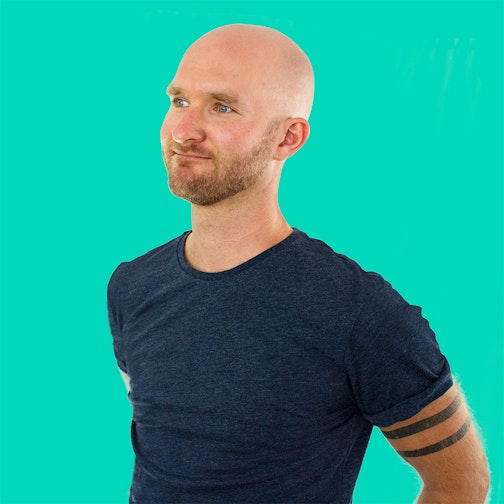Interview with Bob Hanold, Formerly of Los Alamos National Laboratory
On the Partnership Office Between Los Alamos and Sandia
-
-
Share
-
Share via Twitter -
Share via Facebook -
Share via Email
-
Continuing Breakthrough Institute’s series of in-depth interviews with pioneers of the shale revolution, Senior Energy Analyst Alex Trembath talked with Bob Hanold, formerly of Los Alamos National Laboratory. Bob completed his PhD in engineering science at Case Institute of Technology and accepted a postdoctoral fellowship at Los Alamos National Laboratory in 1966, where he worked until his retirement in 1999. Although initially involved in microseismic fracture mapping and hydraulic fracturing for geothermal projects, he transitioned entirely to oil and gas projects with the formation of the Partnership Office.
How did your career in energy begin?
I got my PhD in engineering science from Case Institute of Technology and started working at Los Alamos National Labs as postdoctoral fellow in 1966. The first two years were the basic research program — carbon dioxide as material use for flooding oil fields, advanced heat transfer rates, things like that. After two years I joined the lab full-time.
What was your work focused on?
I was involved in weapons program for about five years and was testing advanced weapons. After that I always had a very motivated interest in energy. I helped lead the lab’s evolution towards energy from weapons after the oil crises.
What was the lab’s initial energy research like?
Los Alamos started early on in the area of geothermal energy. We got Los Alamos started in microseismic mapping before fossil energy. We drilled wells in New Mexico in the backyard of Los Alamos. This was really the beginning of the energy applications of microseismic. This was in the early 1970s, funded by the Division of Geothermal Energy. After that we branched out to fossil energy.
What was the lab’s involvement with the shales research?
We were involved with the Western Gas Shales Program, but not the Eastern Gas Shales Program. We were involved in the oil shales. We had lots of explosive expertise in rubbelizing shales in the WGSP and oil shales. We also worked with the Unconventional Gas Program, and we got involved in the microseismic before any other labs.
What was the Oil and Gas Recovery Partnership?
The Partnership began between Los Alamos and Sandia in the late 1980s. I wrote the proposal, and as a lab decided to ask Sandia if they would like to join us. It was focused on methods and technologies to extract unconventional oil and gas. It was a very different paradigm — more industry-driven than typical government programs are. We had an industry review panel, but no funding ever went to industry.
What was the level of government oversight?
We briefed DOE Secretary Hazel O’Leary several times, once with President Clinton. Senator Peter Domenici was a big supporter — he realized the importance of oil and gas, and he believed energy research shouldn’t be locked up in the weapons program.
There was always pressure to cut funding. We liked to believe we were still engineers and scientists, although we did interact with Congress. We worked to get Clinton, Domeninci, and others to meetings with the partnership and show them how the industry review board worked. Again, we never funded industry. We wanted to highlight the collaborations with the independents.
Mark Murphy was an independent producer in New Mexico and he very effectively explained how critical it was to the smaller independents to have access to the research capabilities of the labs. The partnerships gave the independents, which produce an enormous amount of oil and gas in this country, the opportunity to get the research and experimentation done. The majors had facilities and capabilities, but the independents really didn’t have that.
How did the Partnership grow over time?
In the beginning fracture mapping was a major part of the Partnership. The development of seismic receivers was done at Sandia. Los Alamos was more involved with microseismic mapping and data processing.
As time went on, it picked up Livermore and Lawrence Berkeley Labs, then some others other labs — Idaho National Engineering Lab, Brookhaven National Lab, Argonne National Lab, Oak Ridge. We got the attention of DOE and Alex Crawley in the Oil Recovery Lab.
What do you see as the role of government energy research?
Rarely does something just light up a lightbulb and all of a sudden it works the next day. These are difficult problems. Before they could get to hydraulic fracturing, they had to get the horizontal drilling, the instrumentation and mapping technologies.
In the mid-to-late 1970s, it was projected the United States had a seven-year reserve of natural gas; now they’re talking about 100-year reserve. The skepticism about the resource was really motivating.
Read other interviews with shale pioneeers:
Interview with William Burnett, Formerly of the Gas Research Institute
Interview with Norm Warpinski, Director of Technology for Pinnacle
Interview with Dave Northrop, Formerly of Sandia National Labs
Interview with Dan Steward, Former Mitchell Energy Vice President
Interview with Terry Engelder, Professor at Penn State
Interview with Alex Crawley, Former Program Director for the Energy Research and Development


